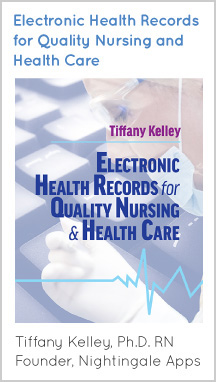This week I visited an acupuncturist for the first time. The acupuncturist asked me about my past medical history as well as my current health. She asked me about when I last had labs drawn and if I knew the results.
I knew I had labs drawn recently, however I had no recollection of what was drawn during my last physical nor what those lab values were as a result.
I had to tell her, ‘I don’t know.’ (I also didn’t know I would be asked about them).
Yet, because I didn’t get a phone call or a letter in the mail notifying me of abnormal results I assumed that they were within normal range. However, this led me to think, ‘shouldn’t I be able to know what was tested and the associated results?’
This seems simple. I know some will read this and be quick to say that they can find it in their patient portal provided by their health care organization. Some will say they don’t care since they were not out of range. However, these two responses represent both ends of the spectrum.
Recently, Apple announced their movement into consumer health IT to exchange personal health data to the iPhone for consumers (e.g., patients in the eyes of health care organizations). I’ve read varying responses to this announcement that have ranged from quite positive while others a bit cynical.
I take the positive outlook because of some current challenges.
First, not everyone has easy access to their lab records. Some are lucky to find them on the portal. Yet, not everyone has a laptop with them during a medical appointment. I did not bring mine to the acupuncturist. Do you bring yours?
Second, there is no reason why I as a patient must make a call to a provider office (maybe multiple offices) and speak to the receptionist to gain access to my lab work. (Please don’t ask me if I have a fax machine 🙂 ). Think of the time this takes on the patient side and the provider side. Then, you need to securely receive the results via email to encrypt the PHI if not through the portal.
Now, let’s switch gears. I want you to think about your bank account(s). Regardless of who you bank with, you can access your account from your phone or your laptop. You don’t keep your money in your possession but you feel in control of how to access it and keep track of it in real time.
In terms of our personal health data, we, as consumers or patients, don’t want to have servers in our home or have cloud instances to store our protected health information (PHI) and our electronic health record. Yet, we do (or should) want and should have access to our records to be able to say something other than ‘I don’t know’ when another medical provider asks about our results.
Perhaps not everyone wants that access right now or sees the value in having it available to them. However, that is to be expected when you are shifting to a new paradigm.
A theoretical framework that I often use in my talks is Rogers Diffusion of Innovation. Within that model are 5 groups that move with the innovation. The first group is the Innovators and they represent only 2.5% of the population. Thus, out of 100 people only 2.5 would be actively seeking it out. That leaves 97.5 or 97.5% of the population that will wait and see how it goes with the innovators before considering adoption.
There’s no reason why I shouldn’t be able to provide answers to questions about my own personal health status when asked in a doctor’s office, especially if the answers will impact my treatment plan.Now, in my situation the appointment was elective. However, think about those individuals who have a complex medical condition, are in and out of multiple specialists’ offices and/or simply don’t know that they could know these answers if given the right tools…that is lost time.
I am looking forward to seeing the developments with the recent news. However, as with anything, the technology is just one piece. It is also about the people, processes, internal organization and external organization. These factors are dependent upon each other.



